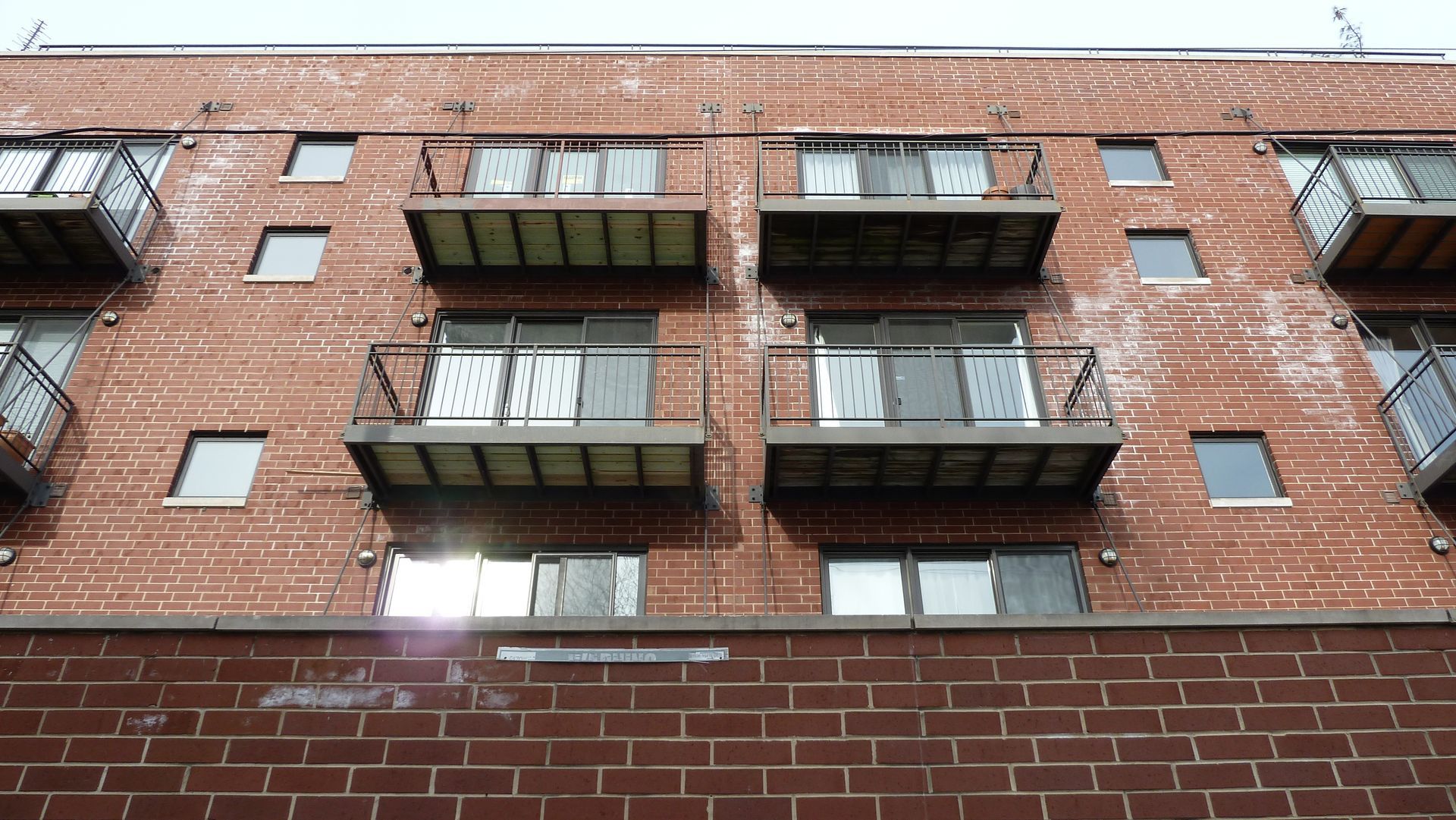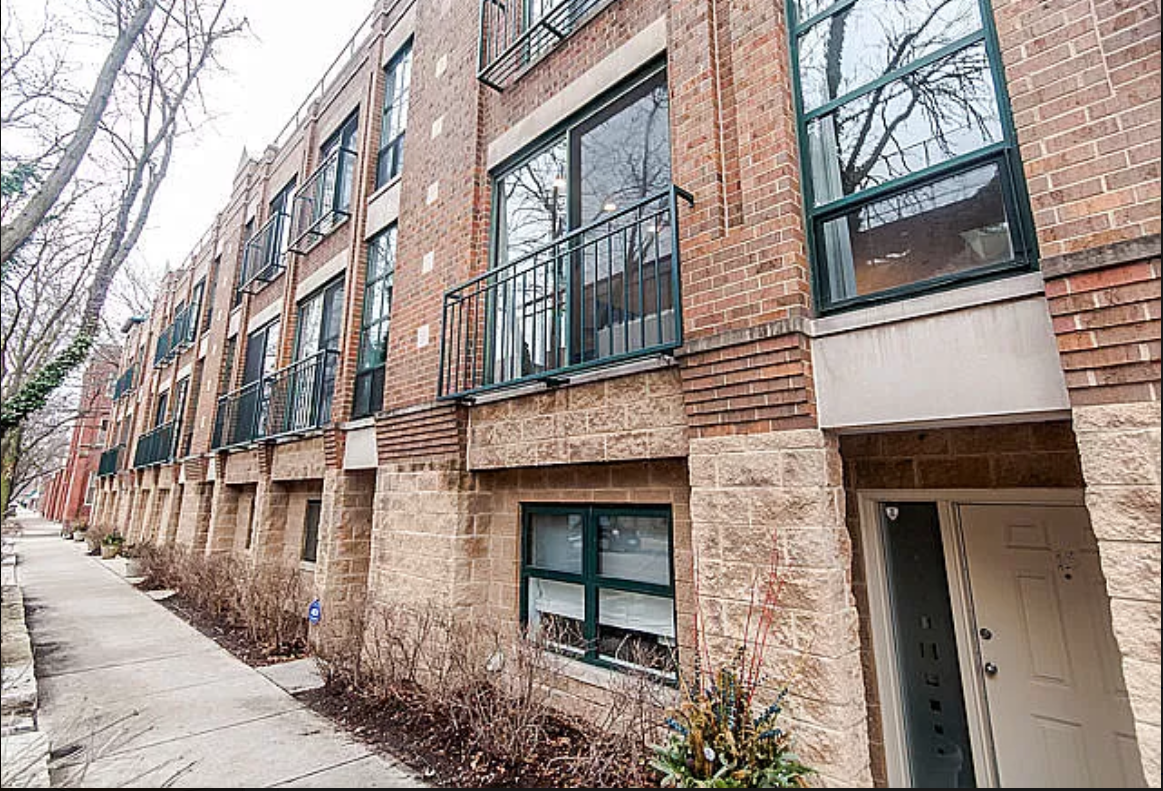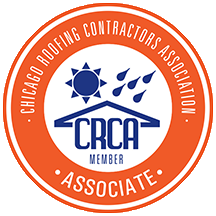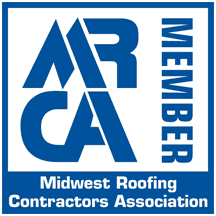Moisture Intrusion and Wet Masonry Buildings
Wet Building Crisis in Chicago

Wet Brick and Block Building Chicago's Lincoln Park neighborhood

Wet Split Face Block, Brick and Block Building with Decorative Renaissance Stone details in Chicago's Ravenswood neighborhood
Continued from Home page
It’s probably NOT a roof leak. Of course it could be from a roof leak, but in masonry buildings in Chicago, especially split face block buildings or brick buildings with a lot of faux limestone details, we’ve found the roof membrane is often just fine.
So before you go spending $40K+ for an premature roof replacement, talk to a home inspector or give us a call to confirm the leak source.
Most of the time, we find that water is seeping through the masonry and accumulating in the roof system. This seepage, in addition to the naturally forming condensation under the roof membrane caused by the temperature difference between the roof membrane and the masonry wall it’s attached to, can damage roof trusses quickly.
Yes, that's right, the roof membrane, naturally produces condensation UNDER it, that's what the turbine fans are supposed to take care of!
click to learn more
Back to masonry issues...
All masonry buildings are different, and deteriorate in unique ways. We diagnose the issues specific to YOUR building, find the water source, and design a repair to fix it permanently.
We use a combination of custom flashings to divert bulk water away from the building and passive ventilation (parapet vents and roof vents) to exhaust trapped moisture vapor. WickRight vents correct the balance of wetting events (rain and snow) and condensation accumulation to continuous drying events, that stop mold growth and slows further structural damage. Once your building starts to dry, we repair damage and make your home whole again.
Water doesn’t discriminate. It destroys custom masonry homes as quickly as it destroys condos and town homes. Under the decorative interior finishes, most buildings built since 1990 are constructed of new-growth, tree-farm lumber. New growth lumber has less resin than old growth lumber. Water can turn low-resin lumber to mush in a matter of months. Older buildings were constructed with old-growth tree lumber that contains a lot of resin that makes lumber naturally water and mold resistant.
If your home has persistent leaks or smells of mold, schedule a building evaluation today. It’s important to repair moisture intrusion quickly to protect your investment before structural damage occurs, including truss rot, which can lead to collapse.
Ask Bob to tell you the "so I went to the bar for one beer and when I came home there was a truss sitting on my pillow" story!
Click to learn more about Common Moisture Intrusion Points
• Renaissance Stone or Pre-Cast "Stone"




